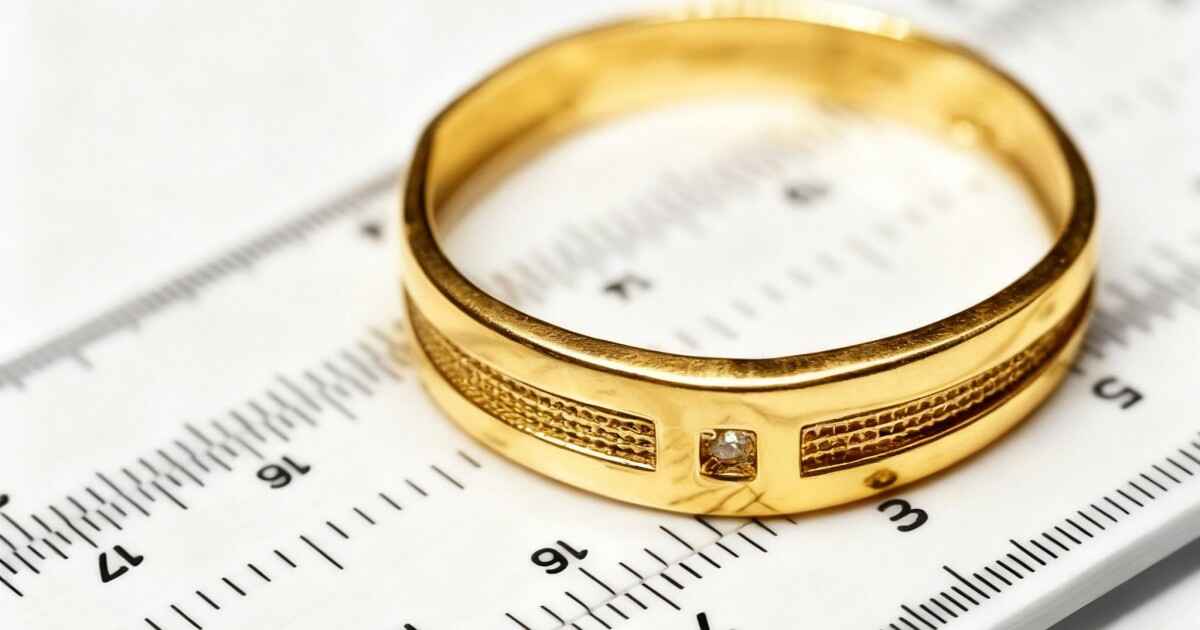Ring Size Finder — Find Your Perfect Ring Size
Welcome to RingSizeFind — your friendly helper for accurate ring sizing. Whether you’re buying an engagement ring, a wedding band, or a simple everyday piece, we make measuring easy, reliable, and stress-free.
Measure Ring Diameter
Your Ring Size:
Convert Ring Sizes
Converted Sizes:
Ring Size Chart
| US | UK | EU | Diameter (mm) | Circumference (mm) |
|---|

Why accurate ring sizing matters (and why you should care)
Getting the right ring size isn’t just about comfort — it’s about safety, appearance, and long‑term wearability. A ring that’s too tight can be uncomfortable and hard to remove; a ring that’s too loose can spin, snag, or even fall off. We want your ring to feel like it was made for you — snug enough to stay put, comfortable enough to wear all day.
On top of that, buying rings online adds a layer of uncertainty. That’s why RingSizeFind focuses on practical, tested methods (plus free printable tools) you can use at home or share with a jeweler.
Everything we offer — quick overview
- Free printable ring size chart (PDF) — download, print, and match a ring to the chart.
- Step-by-step measurement guides — multiple methods so you can choose what works best.
- International conversion tables — US, UK, EU, Japan, India and more.
- Special guidance for wide bands, comfort-fit rings, and resizing considerations.
- Expert tips and FAQs — answers to common problems and mistakes.
How to measure your ring size at home — friendly step-by-step
We’ll walk through three easy methods. Pick the one that’s most convenient for you.
Method A — Use a ring you already own
- Find a ring that fits the finger you want to size.
- Place it over the printed RingSizeFind chart and center it on the circles until you find the best match.
- Double-check the inner diameter in millimeters and match it to our conversion table below.
This is the most accurate home method if you have a well-fitting ring for that finger.
Method B — String or paper strip (fast and simple)
- Cut a thin strip of paper or use a piece of non-stretchy string.
- Wrap it snugly around the base of your finger (not too tight) and mark where the ends meet.
- Measure the length in millimeters and use our circumference-to-size table to find your size.
Tip: Measure at the end of the day when your fingers are their largest and do the measurement on the finger where the ring will sit.
Method C — Printable sizer (most accurate if printed correctly)
- Download and print our PDF printable chart at 100% scale (do NOT scale to fit).
- Follow the instructions on the PDF for using the sizer or comparing an existing ring.
- Confirm the measured diameter with our conversion table below.
Make sure your printer settings don’t scale the page. We include a 1 cm calibration box on the PDF so you can verify print accuracy.
Ring size conversion — US, UK, EU, Japan and more
Ring sizes vary by country. Below is a simplified conversion table — use our full Ring Size Guide for printable, downloadable tables and precise measurements.
| US | UK | Inner Diameter (mm) | Circumference (mm) |
|---|---|---|---|
| 4 | H 1/2 | 14.8 | 46.5 |
| 5 | J 1/2 | 15.7 | 49.3 |
| 6 | L | 16.5 | 51.9 |
| 7 | N | 17.3 | 54.4 |
| 8 | P | 18.2 | 57.0 |
| 9 | R | 18.9 | 59.5 |
Note: These are common reference points — always use an actual measurement (diameter or circumference) whenever possible for best accuracy.
Average ring sizes — a quick guide
If you’re buying a ring as a gift and don’t know the recipient’s size, these averages can help as a starting point:
- Women (average): US 6–7
- Men (average): US 9–10
- Young adults/teens: Varies widely — measure when possible
We also break down averages by country and provide tips on choosing a slightly larger size for comfort when gifting — see Average Ring Size.
How band width and profile affect fit
Wide bands cover more finger surface and often feel tighter than narrow bands of the same number. Comfort-fit interiors, beveled edges, and tapered designs change how a ring sits. If you love bold, wide bands, you may need to size up 0.25–0.5 sizes — our article on Ring Size vs Band Width explains this in detail.
Common mistakes (and how to avoid them)
- Measuring cold fingers: Cold temperatures shrink fingers — measure at normal room temperature.
- Using stretchy string: Some strings stretch and give a false large measurement — use non-stretchy material or the printable sizer.
- Scaling the printout: If your PDF is scaled to fit the page, the measurements will be wrong. Use the 1 cm calibration box on our printable PDF.
- Ignoring band width: A 2 mm band and an 8 mm band are very different experiences even at the same size.
Printable & digital tools we recommend
To make life easier, RingSizeFind provides:
- Printable Ring Size Chart (PDF) with a calibration box.
- Step-by-step visual guides and a ring size FAQ.
- Conversion tables and measurement converters right on the site.
If you prefer apps, we list and test several ring-sizing apps on our blog with pros and cons to help you choose.
When to visit a jeweler
Home methods are excellent, but certain situations call for a professional:
- When buying a very expensive or custom engagement ring.
- If your finger has an unusual shape or you suspect swelling issues.
- When resizing is likely and you want the jeweler to advise on limits for precious metals or complex settings.
Find a certified jeweler and ask them to measure with a steel ring mandrel for the most reliable result. For technical information about gem settings and materials, we reference the Gemological Institute of America (GIA).
FAQs — quick answers to common ring size questions
Q: How can I find my ring size without measuring tools?
A: Use a ring you already own and compare it to our printable chart, or wrap a non-stretchy string around your finger and measure the length. Method B (string/paper) also works well when done carefully.
Q: Do fingers swell at different times?
A: Yes — temperature, activity, and time of day can all cause slight swelling. Measure at the end of the day for a conservative fit.
Q: Should I size up for a wide ring?
A: Often yes. For bands wider than 6 mm, consider sizing up 0.25–0.5 sizes depending on profile and comfort-fit design.
 RingSizeFind
RingSizeFind
